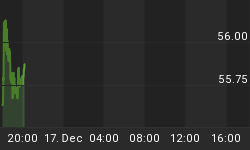This year, a new tax deduction has taken effect that could end up being a significant benefit for business owners who aren’t corporate. It could even be better than the generous corporate tax cut last year that saw rates go down to 21 percent. But wading through the complexities will require a great deal of assistance—not even the best accountant has it all figured out yet.
If you’re trying to run a small business without a CPA, getting this 20-percent 199A deduction might prove elusive.
Here’s why:
The new Tax Cuts and Jobs Act (TCJA) was passed in December 2017 and began to take effect in 2018. The new Act introduced a new provision of Internal Revenue Code Sec. 199A that allows pass-through business owners, including S corporations, sole proprietorships and partnerships to deduct up to 20 percent of the owner’s qualified business income under certain situations.
Being a new law, the process of determining the best way to take full advantage of 199A deduction is a rather complex one. As such, any pass-through business owners who would like to do so are likely to require the services of a financial advisor or accountant.
How 199A Deductions Work
To get the 20-percent deduction, you first have to understand what a pass-through business is, and what types of businesses qualify, as well as how they qualify. You also have to stick within certain income brackets.
First, a pass-through entity is a type of business structure that provides some protection from the adverse effects of double taxation. A pass-through business does not pay the usual corporate tax; instead, corporate income is allocated among the owners and then income tax is levied at the individual owners’ level. Limited liability companies, sole proprietorships, partnerships and S corporations are regarded as pass-through entities. Related: Trade War With EU Temporarily Averted
Under the new bill, however, not all pass-through business income levels qualify for 199A deductions.
For specified service businesses including law, health, actuarial science, financial services, consulting, brokerage services, performing arts, athletics , deductions are phased out on their personal incomes in the rather narrow income ranges of $315,000 and $415,000 for joint filers and $157,500 to $207,500 for single filers.
In other words, deductions cannot be applied if couples or singles earn above the top end of the specified ranges. Interestingly, engineering and architectural services have been removed from this category.
For non-specified service businesses, 199A deductions apply for the same income ranges, but this is where it differs. For non-specified service businesses, owners with incomes above the specified thresholds have their deductions limited to the lesser amount of the following two calculations:
• 20 percent of the qualified business income, or
• Greater of either: (i) 50 percent of W-2 wages (ii) sum of 25 percent of W-2 wages and 2.5 percent of the unadjusted basis after acquisition of qualified property
Related: Which Banks Pay The Most For Your Cash?
Key Considerations
Some key considerations of the new bill include:
• Qualified business income is defined as the net of qualified items of income, gain, loss and deductions as calculated for businesses operating in the United States. Some income items including guaranteed payments, reasonable compensation paid to the taxpayer for services rendered to the business and certain investment-related income are excluded from qualified business income.
• The new law reduces the threshold at which tax understatement is considered substantial for purposes of penalties prescribed under Sec. 6662 from 10 percent of tax required or $5,000 to 5 percent of tax required or $5,000. In effect, the new law leaves less room for errors before accuracy-related penalties and fines kick in.
As you can see from the provisions listed here, 199A deductions are anything but simple or straightforward.
In fact, tax advisors are still consulting with the government for guidance on several thorny issues such as what income(s) can be aggregated if a person runs multiple businesses. Still, talking to a tax professional can help you take full advantage of the new bill in the meantime.
By Josh Owens for Safehaven.com
More Top Reads From Safehaven.com

















